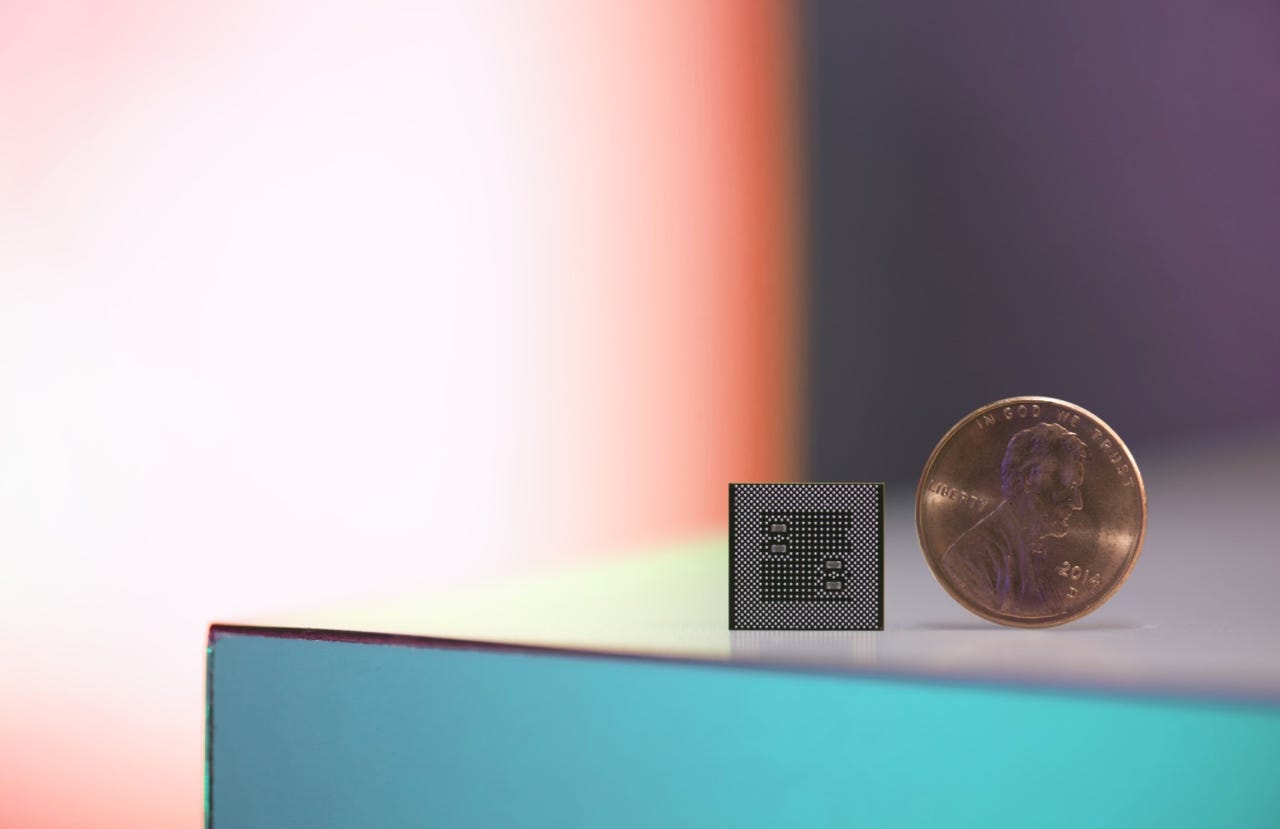Qualcomm Snapdragon 835 processor brings VR to your mobile devices


Qualcomm has released the technical details of the latest flagship product in the Snapdragon range, the Snapdragon 835.
The Snapdragon 835's name was quietly mentioned last year when it came to light that the US chip maker was working with Samsung to produce the new range of chips which power many of our smartphones and tablets today.
Back in November, at the Qualcomm Snapdragon Summit in New York, the company said the new processor, the Snapdragon 835, is based on Samsung's 10-nanometer (nm) FinFET process technology.
The protege of the Snapdragon 820, the 835 is smaller, more compact and lightweight than its predecessor, which comes in at 14nm FinFET and consumed 25 percent more power.
Qualcomm says the use of this new form factor, complete with over three billion transistors and improved IP blocks, has resulted in a "30 percent increase in area efficiency with a performance boost of up to 27 percent, or 40 percent lower power consumption" -- and also gives vendors the option to slot bigger batteries in their products.
According to Travis Lanier, Qualcomm's senior director of product management, the Snapdragon 825 supports up to 11 hours of mobile device use or media streaming for seven hours, together with 4K video playback. Alternatively, devices powered by the chip will be able to handle on average three hours of continuous 4K video capture or approximately two hours' worth of virtual reality gaming.
In connection to battery life performance, the company has also launched Quick Charge 4, which Qualcomm claims can give you up to five hours' mobile device use with only a five-minute charge.
The Snapdragon 835 also comes with a set of upgrades to improve device performance:
- Qualcomm Hexagon DSP: Includes Tensorflow and Hallide support;
- Qualcomm Kyro 280 CPU: Based on ARM Cortex technology, four cores up to 2.45Ghz, 2mb L2 cache, apparently a 20 percent performance boost;
- Qualcomm Adreno visual processing: 25 percent faster graphics rendering with 60 times more display colors;
- GPU: More efficient rendering of advanced 3D visuals for DX12, OpenGL ES, and Vulkan applications;
- DPU: 10-bit 4K @60fps display, Q-Sync, and a wide color gamut;
- VPU: 4K HEVC 10-bit playback, foveated video support.
Virtual reality is a major tech trend which has prompted Qualcomm to focus on improving power performance, graphics and video. According to Kressin, truly "immersive" mobile experiences are "only possible with the right visuals, sounds, and interactions," and a strong processor is therefore at the heart of matter.
"We are at the cusp of VR being good enough," Kressin says. "We're not quite there yet but we are almost there."
As a result, the Snapdragon 835 has been built for "extreme" pixel quality, low latency, spherical 360-degree view support, high audio quality and precise motion tracking through a VIO subsystem. The company has also moved to support HR10 Ultra HD on the latest Snapdragon chip and supports 4K streaming @60fps.
In addition, the Snapdragon 835 has Q-Sync inbuilt which allows a device's display to render content at the same fps rate as the GPU, which Qualcomm says results in displays which are "smooth and jank-free."
With camera use so popular in today's smartphones and tablets, Qualcomm had designed the Snapdragon 835 to improve how we take photos and quality of images produced. The company says the new processor improves camera zoom, functionality, and focus, and uses the "right core for the right job" through two separate systems depending on whether a user has set the camera to a wide-angle shot or through the telephoto lens.
In addition, the Snapdragon 835 supports EIS 3.0 video stabilization, enhanced roll and shutter correction, provides better autofocus capabilities and includes separate sensors for black & white and color pixels - leading to what the company calls "true to live" color.
When it comes to connectivity, the Snapdragon 835 supports gigabit speeds for 4G networking, and also includes the Snapdragon X16 LTE modem which hosts multi-gigabit channels, added with "5G in mind," according to Qualcomm.
When it comes to security, according to Kressin, "no matter where we are [..] security is starting to move to the forefront." As a result, Qualcomm has boosted the Snapdragon processor's security offerings through Haven, which now includes the Qualcomm Secure Execution environment and App Protect - a system which validates and checks apps and OS integrity.
In addition, the chip maker has equipped the chip with "Secure Camera," an element which aims to make biometric ID checks more efficient. The feature allows for the inclusion of iris scanning as a biometric identity marker alongside fingerprint checks.
The chip is also USB-PD and USB Type-C compliant.
Many of these improvements, Qualcomm says, has been made possible through machine learning (ML). Kressin says ML is the "common thread" which connects all of the major "pillars" of the processor; for example, graphics, audio and sensor improvements are critical for virtual reality, and algorithms which detect faces can improve the focus of photography.
See also: Qualcomm launches bug bounty program for Snapdragon chips, modems
The Snapdragon 835 is in production now and is expected to ship commercially in devices during the first half of 2017.